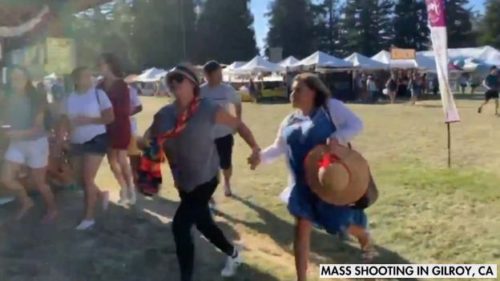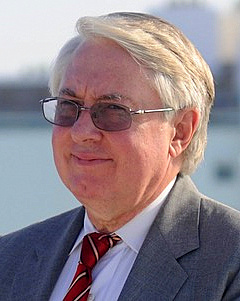
I’d like to pose a question to the experts on this topic: Is there a gun-control measure that could mitigate the risk of mass shootings in public venues, such as the one that occurred at the Gilroy Garlic Festival?
Whenever society is besieged by important problems, it turns to experts for insight. In this context, rank-and-file police and boots-on-the-ground infantry veterans are the experts—not chiefs, sheriffs or generals.
Mass shootings, particularly those occurring in public places, are currently the driving force for gun control. (School shootings are important but are a subset of all mass murders, even though they occur in nominally secured buildings.)
The Gilroy incident is an excellent case study. This public access venue was as well controlled as could be for such gatherings. The “gun-free zone” was secured by a chain-link fence and attendees were screened for weapons via controlled access. Nevertheless, the 19-year-old perpetrator bypassed the controls. Similarly, the Mandalay Bay shooter overshot the concert’s barriers from a high-ground position. What could conceivably be done to reduce mass shootings in such public venues? Most additional interventions for preventing either kind of attack would make the events undoable.
Further securing the perimeter is impractical. Whether there are 100 or 10,000 attendees, attackers can skirt or evade perimeter barriers like at Gilroy and Mandalay Bay.
Reducing the number of guns to prevent bad guys obtaining them would be impossible. There are 400 million guns in America. Suppose half are suitable for mass killing—that’s 200 million. Suppose the total was reduced by 95%? (Which is impossible, given the 95% plus non-compliance with recent orders to turn in outlawed firearms.) A crazy killer would still be able get access to one of them somewhere, all that he needs. If he couldn’t buy an outlawed or diverted commercial firearm, ones will be available that are fabricated in a cottage machine shop or smuggled from abroad.
Could we shut down cottage machine shops? Stop smuggling? Clearly, we’ve been ineffective in shutting down meth labs or stopping drug smuggling. We couldn’t do any better with guns.
Bear in mind that mass shooters, gang killings and suicides are vastly different in character. An argument can be made for saving a few lives in a population of 10,000 gang bangers by reducing their gun inventories from 9,000 to 8,000. However, no such case seems plausible for a population of 10 deeply disturbed mass killers who plan and prepare for their attacks for months. How do we find any of those 10? How do we disarm them or keep them from accessing the black market?
America has suffered relatively few mass public venue shootings, from unbalanced people with a variety of motives (and some with no explicable one). Who are the greatest threats? What if other kinds of threats change the whole battlefield?
America was asleep at the wheel with respect to the prospect of an attack by Japan before World War II. How about today? Could an unexpected attack come from some other Asian, Middle Eastern, African or Latin American country?
If Americans are concerned about the minuscule risk of being shot in a public venue by a domestic mass killer, then we should also be concerned by the potential for such an attack by foreign-influenced terrorists again. How could gun control possibly reduce this risk?
Positioning sufficient security personnel wherever they might be needed could help. But can American taxpayers afford a cop in every public venue? How many officers or armed guard would be needed to cover each place, not to mention metal detectors?
Gilroy and Mandalay Bay are cases in point. Both venues were adequately covered by police bearing handguns. Gilroy officers were close enough to run to the sound of gunfire and stop the attack within a minute. Their bravery and preparedness are to be applauded. Las Vegas officers were too far away from the shooter’s high ground position even to attempt to return fire with handguns.
It was purely a coincidence that police were in Mandalay Bay offices on other business and could reach the shooter’s position within minutes. Yet that shooter was still free to fire at will for 10 minutes until distracted by an unarmed hotel security guard approaching his door. Arguably, the Las Vegas Police failed to anticipate the potential for a high ground shooter. After all, the only comparable historical incident occurred half a century earlier in 1966, from the Clock Tower at the University of Texas-Austin.
The challenges described here are well beyond the ordinary attention of the American voter. Nevertheless, there is an audience qualified to advise: American law-enforcement officers and combat veterans. They understand mass shootings.
Cycle through the usual gun-control solutions: universal background checks, magazine capacity limits, semi-auto rifle restrictions, registration . . . Would any of these change the number of psychopaths determined to kill people at a public venue? Would any of these have the slightest effect on a foreign-influenced attacker?
Law enforcement experts and combat veterans could offer realistic, if ultimately limited, answers. Would enough police equipped with rifles in public venues stop or dissuade attackers? How much of the deterrent lies in knowing there are trained, official marksmen on duty, versus knowing that well armed citizens are on site?
I was prompted to think about this question at my village’s summer Gay Pride parade. A dozen cops clustered at the major choke point of the parade route to separate eight anti-Pride protesters from parade marchers and watchers. These cops could readily respond to ground fire with their handguns, but would be challenged if a shooter took a perch from a rooftop or a second-story window. I asked one why they didn’t have rifles. He responded hinting that their rifles were present but out-of-sight.
Did we learn anything from the UT-Austin Clock Tower shooting? In that now ancient case, students deployed rifles from their pickups parked on campus, and returned suppressing fire until a civilian and three police officers scaled the tower and killed the shooter. The outcome of that attack demonstrated how important armed citizens are at any venue.
.
.

—‘MarkPA’ is trained in economics, a life-long gun owner, NRA Instructor and Massad Ayoob graduate. He is inspired by our inalienable rights to “life, liberty and the pursuit of happiness” and holds that having the means to defend oneself and one’s community is vital to securing them.
